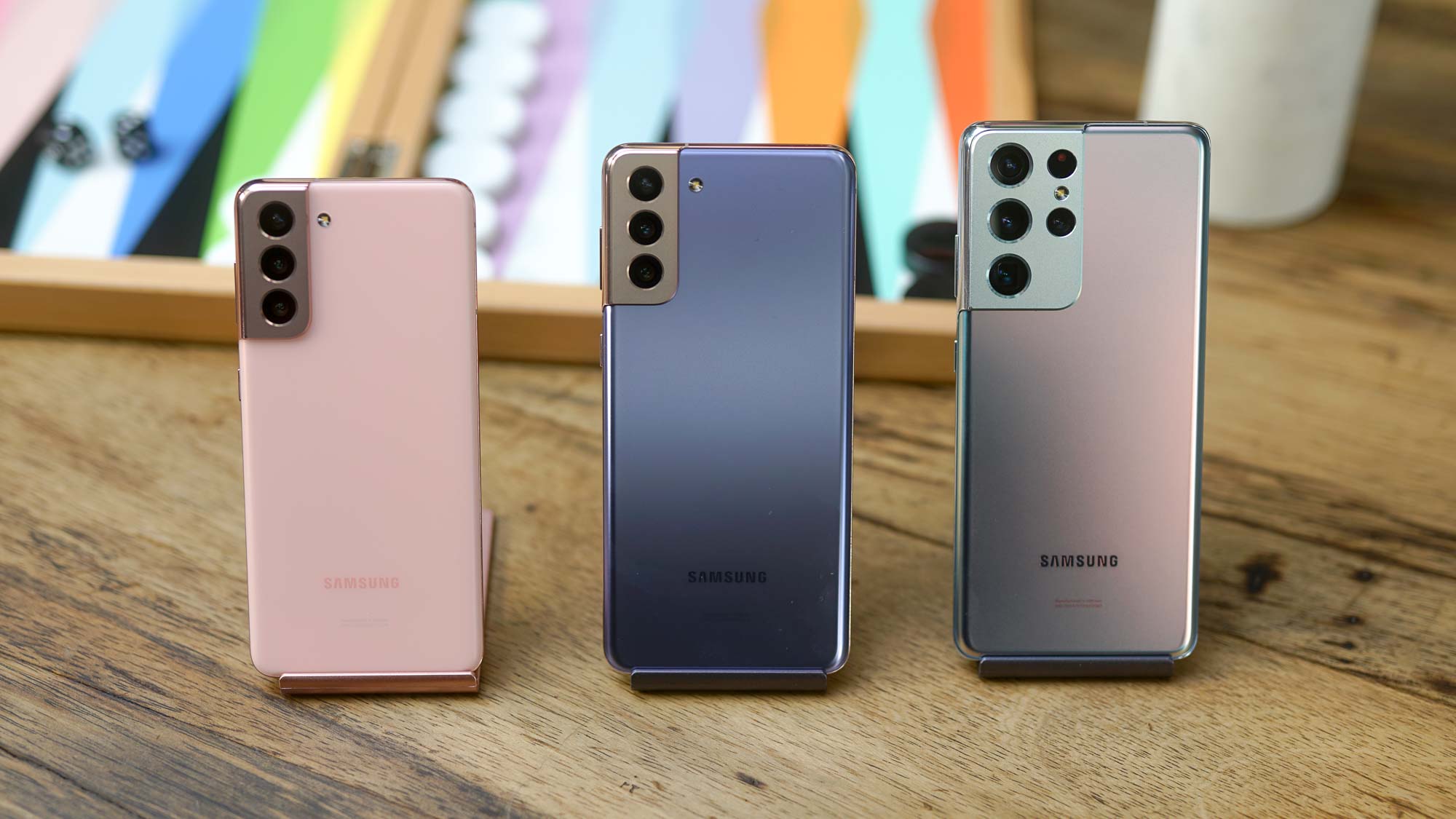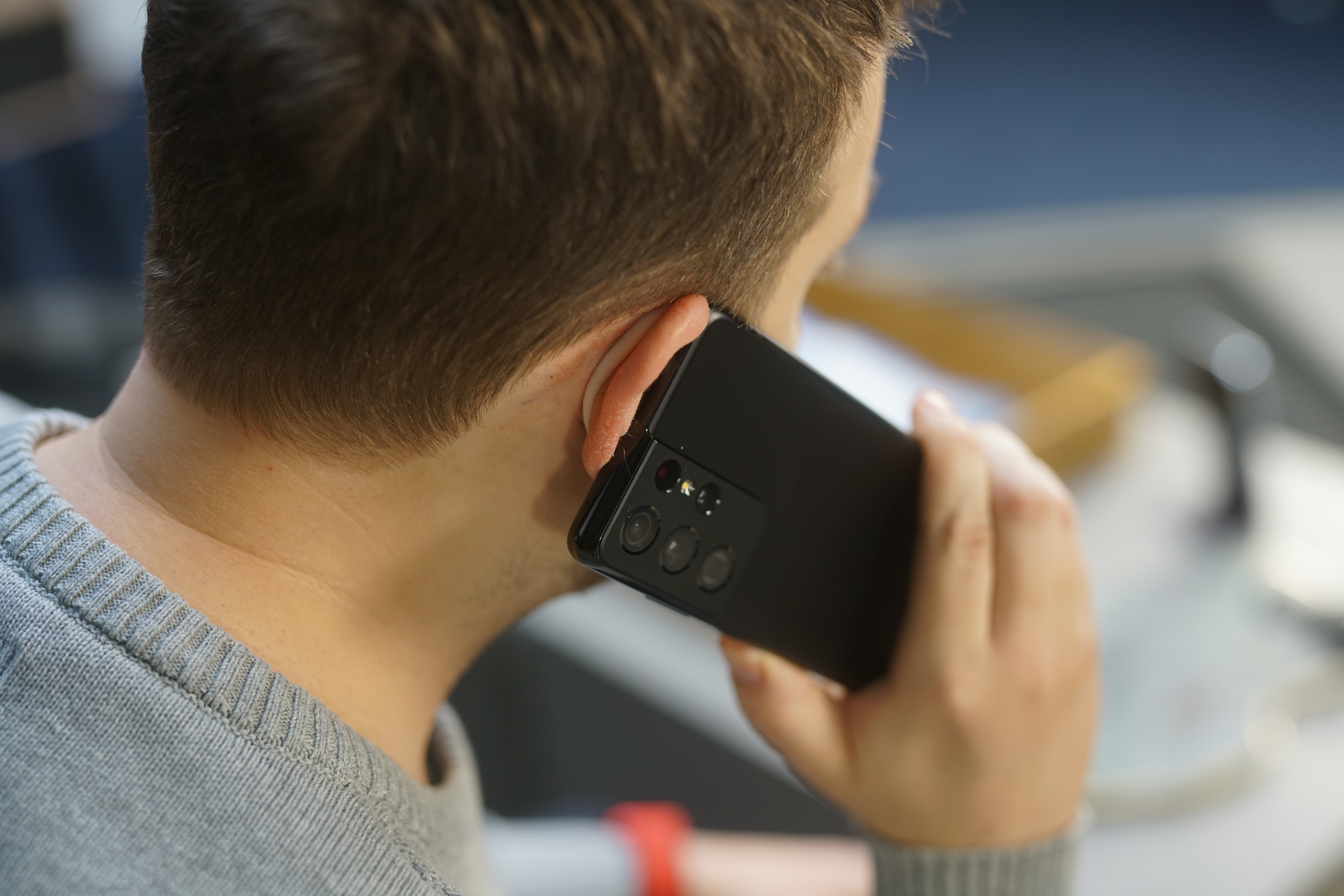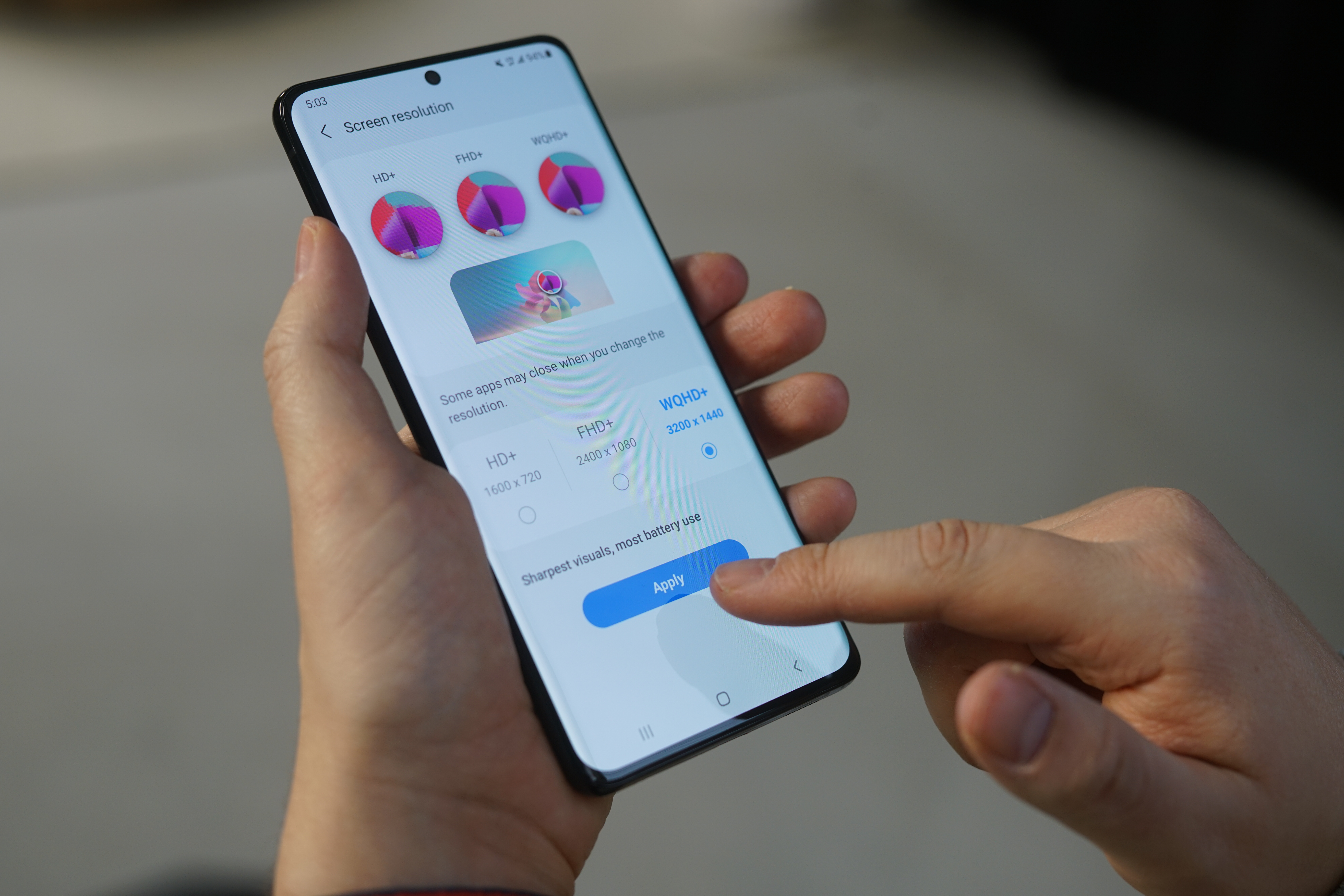Samsung Galaxy S21 vs. Galaxy S21 Plus vs. Galaxy S21 Ultra: What’s different?
Here's what the Galaxy S21, Galaxy S21 Plus and Galaxy S21 Plus have in common and what's unique

The Galaxy S21 family may now be obsolete, but all three are still great phones if you can find them. The only tricky bit is choosing which one to go for.
Like the Galaxy S22 that's just launched, the S21 family consists of standard, Plus and Ultra models. We like them all, but with a $400 price difference between the cheapest and most expensive starting prices, it's not a decision to rush into.
Below we go into detail on all the important specs on the Galaxy S21, Galaxy S21 Plus and Galaxy S21 Ultra. Hopefully after our breakdown, you'll know which one is right for you.
- Get our first impressions in the Galaxy S21 hands-on
- See the best of Samsung's offering in our best Samsung phones guide
- Galaxy S21 Plus vs. Galaxy S21 Ultra
Samsung Galaxy S21 vs Galaxy S21 Plus vs Galaxy S21 Ultra: price
Why you can trust Tom's Guide
The lowest price you'll pay for a Galaxy S21 is $799 for the standard S21. The S21 Plus starts at $999, while the Galaxy S21 Ultra begins at $1,299. You can spend more on all three models if you want extra storage space, or extra storage and RAM capacity in the Ultra's case.
Specifically, add on $50 if you want the 256GB model of any of the three new Galaxy S21 phones. So the 256GB Galaxy S21 would cost $849, for example. As for the 512GB Galaxy S21 Ultra, it costs $1,379, which is still $20 cheaper than what the Galaxy S20 Ultra debuted at last year.
All versions launched on January 29, and are available from all the main mobile carriers, as well as unlocked from other retailers.
Samsung Galaxy S21 vs Galaxy S21 Plus vs Galaxy S21 Ultra: Specs
| Header Cell - Column 0 | Galaxy S21 | Galaxy S21 Plus | Galaxy S21 Ultra |
|---|---|---|---|
| Starting price | $799 | $999 | $1,299 |
| Display (Resolution; Max. refresh rate) | 6.2 inches (FHD, 120Hz) | 6.7 inches (FHD, 120Hz) | 6.8 inches (QHD, 120Hz) |
| Rear cameras | 12MP main, 12MP ultrawide, 64MP telephoto | 12MP main, 12MP ultrawide, 64MP telephoto | 108MP main, 12MP ultrawide, 10MP 3x telephoto, 10MP 10x telephoto |
| Front camera | 10MP | 10MP | 40MP |
| Chipset | Snapdragon 888 | Snapdragon 888 | Snapdragon 888 |
| RAM | 8GB | 8GB | 12GB/16GB |
| Storage | 128GB/256GB | 128GB/256GB | 128GB/256GB/512GB |
| Operating System | Android 11 with One UI 3.0 | Android 11 with One UI 3.0 | Android 11 with One UI 3.0 |
| Battery | 4,000 mAh | 4,800 mAh | 5,000 mAh |
| Water Resistance | IP68 | IP68 | IP68 |
| Size | 5.9 x 2.8 x 0.3 inches (151.7 x 71.2 x 7.9mm) | 6.4 x 2.9 x 0.3 inches (161.5 x 75.6 x 7.8mm) | 6.5 x 2.9 x 0.4 inches (165.1 x 75.6 x 8.9mm) |
| Weight | 6.1 ounces (172g) | 7.1 ounces (202g) | 8.0 ounces (228g) |
Samsung Galaxy S21 vs Galaxy S21 Plus vs Galaxy S21 Ultra: Design
All three Galaxy S21 models share the new contoured rear camera bump design, as well as the familiar display with a central punch-hole camera on the front. However the main difference here is size, with the Galaxy S21's screen measuring 6.2 inches, the Galaxy S21 Plus measuring 6.7 inches and the Galaxy S21 Ultra 6.8 inches. The Ultra also has a wider camera bump to fit in the extra sensors.

The display is slightly different on the S21 Ultra too. It has curved edges unlike the flatter S21 and S21 Plus, which means the wider handset will fit better in your hand.
On the back, the Galaxy S21 Plus and Galaxy S21 Ultra use Gorilla Glass Victus, the toughest glass you can currently find on smartphones. The Galaxy S21 instead gets a polycarbonate rear, a.k.a. the dreaded plastic back we saw on the Galaxy Note 20 and Galaxy S20 FE.
Samsung Galaxy S21 vs Galaxy S21 Plus vs Galaxy S21 Ultra: Display
As noted, the Galaxy S21 has a 6.2-inch screen, the Galaxy S21 Plus a 6.7-inch screen and the Galaxy S21 Ultra a 6.8-inch screen. This is the main difference between the three panels, but not the only thing you should consider.
The S21 and S21 Plus both have FHD resolution displays, while the S21 Ultra has a QHD resolution. It'll mean that you'll see more detail on the S21 Ultra than the cheaper models.

As mentioned above, the S21 Ultra's screen is curved on the left and right edges, whereas the S21 and S21 Plus' 2.5D displays are only slightly curved. While curve displays make phones sit better in your hand, it can also make it more difficult to use, since it's easier to accidentally touch an active part of the display.
One thing all the panels have in common is a maximum 120Hz refresh rate. However the ability for the display to alter this rate is greater on the S21 Ultra. The Ultra can change its display refresh rate to anywhere between 10Hz and 120Hz, whereas the S21 and S21 Plus can go between 48Hz and 120Hz.
The lower the refresh rate, the less the display's power draw, so this feature lets the phones drop their refresh rate when it's not needed to help preserve battery capacity. All three phones adjust this refresh rate dynamically based on what activity you're using the phone for.
Samsung Galaxy S21 vs Galaxy S21 Plus vs Galaxy S21 Ultra: Camera
You get the same three cameras on the Galaxy S21 and Galaxy S21 Plus. That trio is made up of a 12MP main camera, a 12MP ultrawide camera and a 64MP telephoto camera. On the front, there's a 10MP selfie camera too.
The S21 Ultra on the other hand offers a lot more camera potential. It instead uses a 108MP main camera, a 12MP ultrawide camera, and two 10MP telephoto cameras, one capable of 3x zoom and the other of 10x zoom. There's also a laser autofocus sensor to help the S21 Ultra track the subjects of your photos. While the main differences are on the back, the single selfie camera on the front is also swapped out to a 40MP sensor.
All three phones use the same camera software however, which features modes like Single Take, 8K video recording, Director's View video recording, and photography staples like portrait mode, image stabilization and night mode. The Galaxy S21 Ultra benefits from an improved Bright Night sensor, so low-light photography should be better with this phone.

Samsung Galaxy S21 vs Galaxy S21 Plus vs Galaxy S21 Ultra: Performance
Every model of the S21 you can buy in the U.S. will have the Snapdragon 888 chipset on the inside. Outside the U.S. Samsung offers the S21 with its own Exynos 2100 chipset.
The Snapdragon 888 reportedly offers a 20% CPU power increase and a 30% GPU power increase compared to the Snapdragon 865 chips in the S20 series. The Exynos 2100 offers either 10% more power or 20% greater efficiency compared to the preceding Exynos 9000 chip. We'll have to wait for benchmark results to come in to see which is the better chip, but with both being the using the latest 5nm process tech to cram more power into the same size piece of silicon, and both featuring integrated 5G modems, there's not going to be a huge difference in performance.
Looking now to memory, the S21 and S21 Plus both feature 8GB of RAM only, with either 128GB or 256GB storage. The S21 Plus gets a choice of either 12GB or 16GB RAM, and options of 128GB, 256GB or 512GB storage.
Samsung Galaxy S21 vs Galaxy S21 Plus vs Galaxy S21 Ultra: Battery and charging
The size of the battery increases with the price of the different S21 models. The Galaxy S21 has 4,000 mAh of battery capacity, the Galaxy S21 Plus 4,800 mAh, and the Galaxy S21 Ultra 5,000 mAh.
All models can charge at up to 25W on a wired connection. They can also charge at 15W over a wireless connection, and reverse wireless charge other phones and accessories at 4.5W. Keep in mind though that none of the Galaxy S21 models will be sold with a charger in the box, so you'll need to buy one yourself or use a charger you already have lying around.
Samsung Galaxy S21 vs Galaxy S21 Plus vs Galaxy S21 Ultra: 5G and connectivity
Here's one of the rare spots where all the phones are completely identical. No matter which S21 you buy, you're getting 5G built-in via the chipset, with both sub-6GHz and mmWave compatibility on offer. Unlike last year's S20, there's no S21 4G edition available, a pity since it was about $100 cheaper than the 5G version.
The S21 Plus and S21 Ultra both feature Ultrawide Band (UWB) chips. This is a new method of hands-free control, which you'll find handy for finding Samsung's new SmartTag trackers, or unlocking your car.
There's even more to explore with the S21 Ultra. Samsung's also given its top-tier S21 WiFi 6E compatibility, the fastest and lowest latency standard for WiFi connections so far.
The Galaxy S21 Ultra is also the first Galaxy S-series phone ever to work with an S Pen stylus. This is a separate peripheral however, rather than the in-built accessory like it is on the Galaxy Note 20, which you can get by buying certain Samsung-made phone cases. The S Pen costs $40 and the cases are listed at $69.99. An S Pen Pro with Bluetooth connectivity is coming later this year.
Samsung Galaxy S21 vs Galaxy S21 Plus vs Galaxy S21 Ultra: Outlook

If you want the best that the Galaxy S21 range has to offer, you should go for the S21 Ultra. Sure it's the most expensive of the bunch, but it also offers the largest, highest quality display, the biggest battery, the most and highest-resolution cameras, the most RAM and storage capacity and the best connectivity options.
Between the S21 and the S21 Plus, the primary difference is the size of the handset. There are more subtle differences however, as the S21 Plus improves on the S21 by featuring a more premium glass backed construction, an ultra wideband chip and greater battery capacity. If you're able to afford the extra $200, the S21 Plus does offer a meaningful amount of worthwhile extras, but the basic S21 is still a good pick if you want to save money or prefer your phones on the smaller side.
Of course, remember that the Galaxy S22 is going on sale, offering improved specs on every level for the same prices. If you want something a little different, there's always the cheaper but outdated Galaxy S21 FE, or the more expensive but futuristic Galaxy Z Fold 3 and Galaxy Z Flip 3 foldables to check out.
Get instant access to breaking news, the hottest reviews, great deals and helpful tips.

Richard is based in London, covering news, reviews and how-tos for phones, tablets, gaming, and whatever else people need advice on. Following on from his MA in Magazine Journalism at the University of Sheffield, he's also written for WIRED U.K., The Register and Creative Bloq. When not at work, he's likely thinking about how to brew the perfect cup of specialty coffee.
